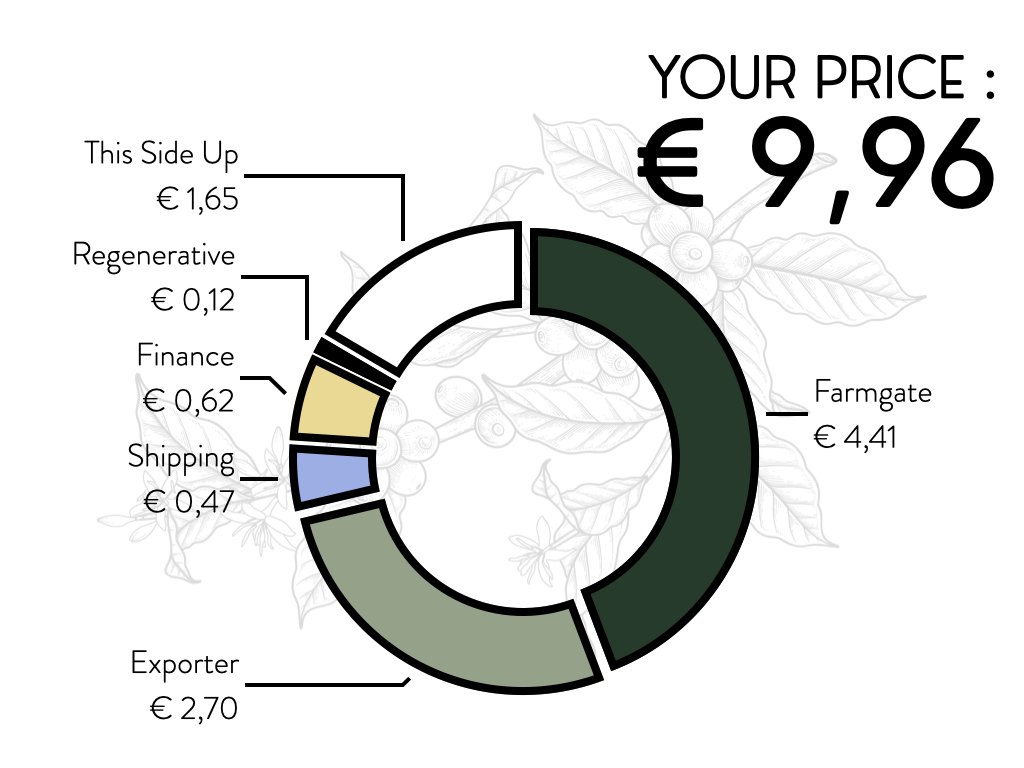Building Economic Growth Through Quality Coffee
Leda was built with a vision to improve economic development for farmers. Their aspiration for growth and development also included bringing in the next generation into coffee farming through employment. While they faced several challenges from 2017 (when the microstation was built first), the most ones were not having access to good roads, threat of poor security and lack of electricity. Their motivation to continue being a group after all these years is because of their ability to produce good quality coffee. They can enjoy the benefits of high prices, bonuses for all of their hard work. Furthermore, having enough operational levy left after purchasing cherries for salaries and maintenance helps them stay motivated. They rely on coffee for income, employment and home consumption.
CULTIVARS
Most of the coffee grown in the Alur Highlands of north-west Uganda is SL14, a variety developed by Scott Laboratories in Kenya and promoted by the Uganda Coffee Development Authority. There is also some Bourbon, which comes from nearby DR Congo, where it dominates.
elevation
1506 meters
NOTABLE
Youth are currently employed as casual workers, security guards, renovation of microstations as well as administrative officers.
PROCESSING
-
When coffee is harvested and taken to the buying stations of Ndhew, Leda, and Ayanyunga, it is either spread on tarpaulin or a quality table for hand-sorting to remove any underripe or overripe fruit. After hand-sorting, it is then taken to the weighing scale, and floating is done immediately to separate the good, red ripe cherries, i.e., those free of disease. Finally, the executives lay out the quality red ripe cherries in the sun on the drying rack/table until they turn from red to brown or nearly black to attain the recommended moisture level. They keep turning the cherries to prevent molding, which can easily affect the flavor if not done thoroughly. The hulling process to remove the thick, dried outer layer is then carried out at the ZCP factory, revealing the green beans. Let me know if you'd like any further adjustments!
-
The price you pay for Leda natural p/kg. We agreed on this price directly with the farmers, disregarding the volatile US Coffee C price.
-
The microstation buys red cherries from the farmers. They process it and then send the dry coffee (in parchment form) to Zombo for final milling, sorting for it to be made to export grade. Farm gate in this case includes price paid to the farmer and the primary processing done by the microstation.
-
The microstation buys red cherries from the farmers. They process it and then send the dry coffee (in parchment form) to Zombo for final milling, sorting for it to be made to export grade. Farm gate in this case includes price paid to the farmer and the primary processing done by the microstation.
-
International shipping from Nebbi (Port of loading - Mombasa, Kenya) to Rotterdam, Netherlands. It is inclusive of freight, customs, insurance and warehousing costs.
-
Average financing cost owed to (mostly social) lenders. This ensures immediate payment to the farmers when the coffee leaves the farm or port.
-
A standard TSU premium on all coffees designated exclusively to accelerate farmers’ own regenerative agriculture project. Another € 0.06 is included in the final price as part of the basic income project being carried out at Zombo coffee partners in cooperation with Eight Network and This Side Up. Read more about this project here
-
This Side Up compensation for spending time and resources importing this coffee. Our work includes year-round contact with producers, managing export, shipping, import, warehousing, grading, sampling, finding and keeping roasting partners for Zombo. € 1,65 is This Side Up’s Model 1 markup. For a full overview of our modular margin construction, see the Trade Models page
Photo gallery
You may use these images freely to promote Leda’s coffee amongst your customers.







